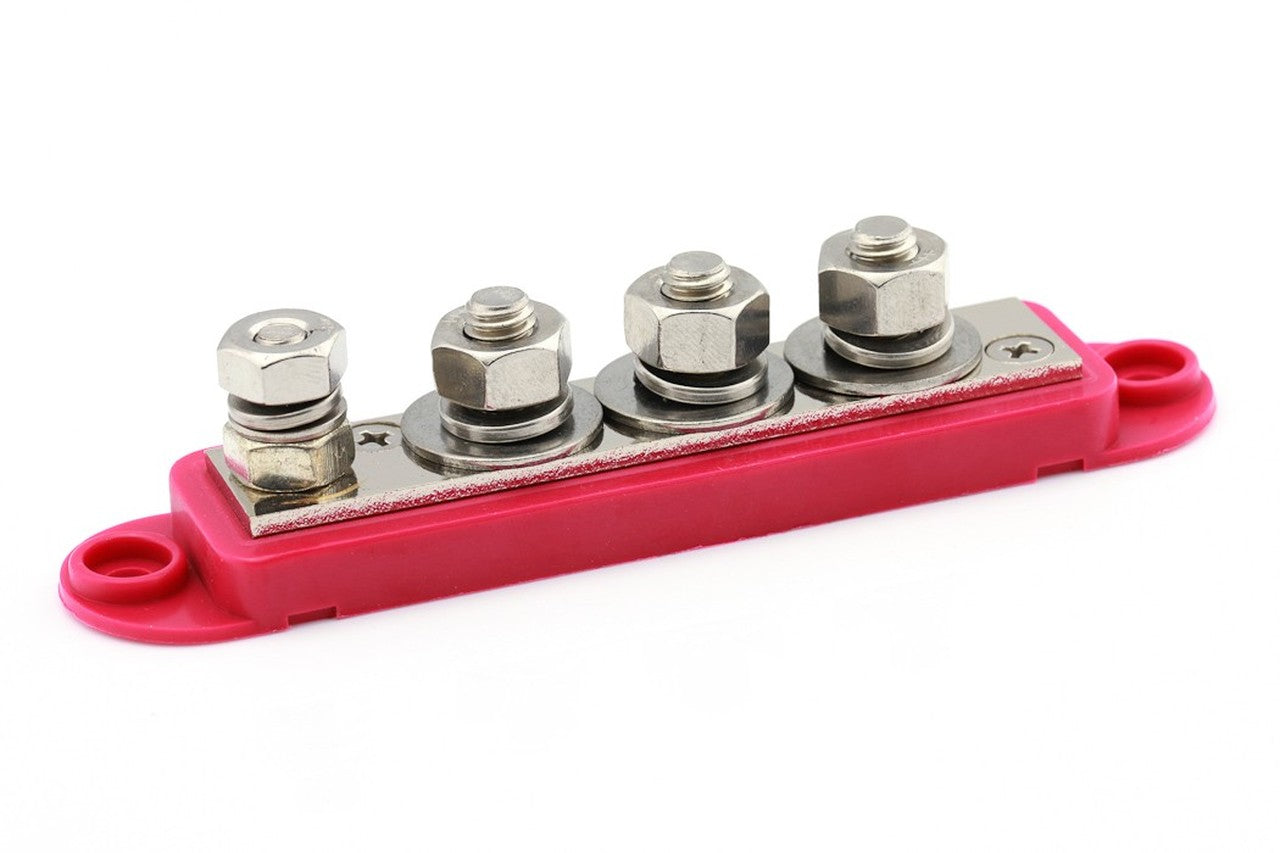Description
PRODUCT DESCRIPTION
Voltage Range: 48V
Stud Height: 17.7mm
Overall Length: 133.6mm
Outer Material: 16 % Glass-filled Nylon
Connection Post Material: Stainless steel
Nut Material: Stainless steel
Point of Distribution: 4 Points (3 x M8 + 1 x M6)
Terminal: 7.5mm
Mounting Centre: 95.7mm
Thread Size (Post): M8
A power distribution bus bar is an essential component in electrical systems, designed to conduct electricity within a switchgear, distribution board, substation, or other electrical apparatus. Its primary purpose is to serve as a central point where multiple circuits can converge, simplifying the power distribution network. Typically made from conductive materials like copper or aluminum, bus bars are available in various shapes and sizes, tailored to the specific requirements of the electrical system they serve.
Bus bars are known for their low electrical resistance and high current-carrying capacity, making them ideal for applications that require the distribution of large amounts of power with minimal voltage drop. They are also favored for their ability to reduce system complexity and enhance the physical organization of electrical networks. In addition to their functional role, bus bars can contribute to improved system safety by providing a clear and defined path for electrical currents, which can be especially important in high-power applications.
The design of a bus bar can vary significantly depending on its intended use. For instance, in high-voltage applications, bus bars may be designed to minimize stray inductance to allow for faster switching speeds, which is crucial for efficiency. In low-voltage systems, the focus might be on minimizing the physical size of the bus bar to fit compact spaces. Modern bus bars may also feature multi-layer laminated structures and overmolded insulation to meet stringent performance specifications.
In the context of power distribution, bus bars play a critical role in the efficient and reliable delivery of electrical power. They are a fundamental part of the infrastructure that powers homes, businesses, and industries, facilitating the flow of electricity from generation sources to end-users. As technology advances and the demand for energy grows, the design and functionality of bus bars are likely to evolve, continuing to play a vital role in the global electrical power distribution network.




